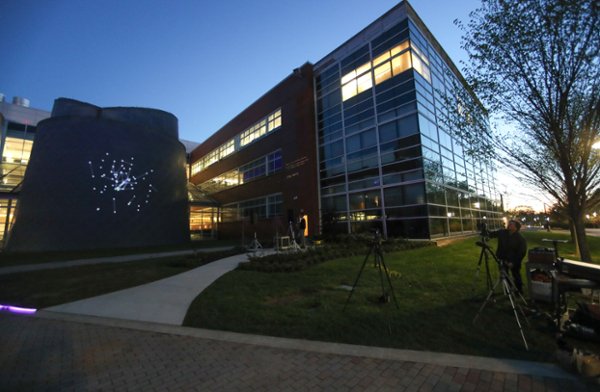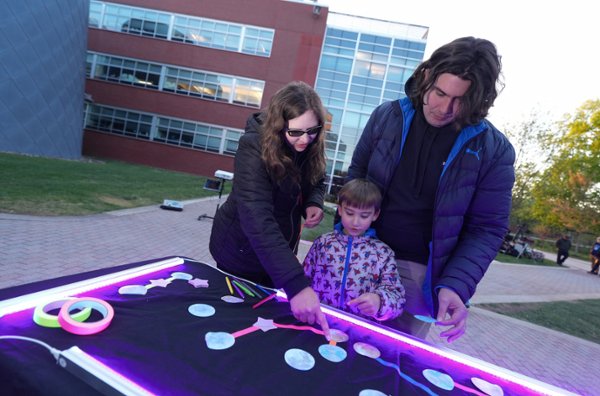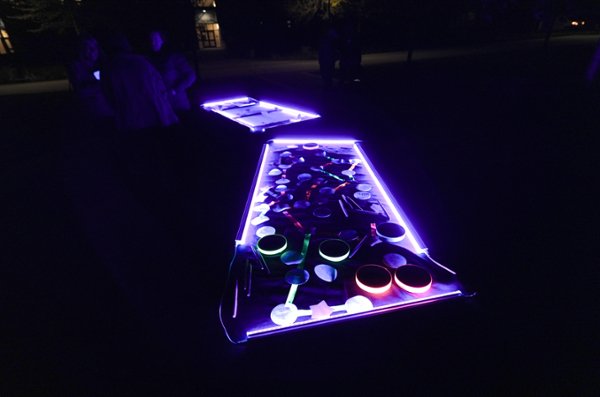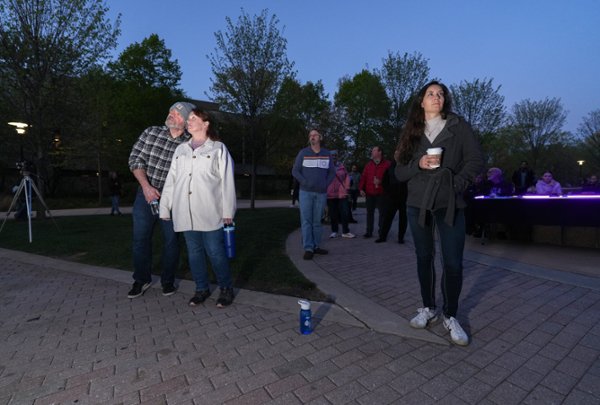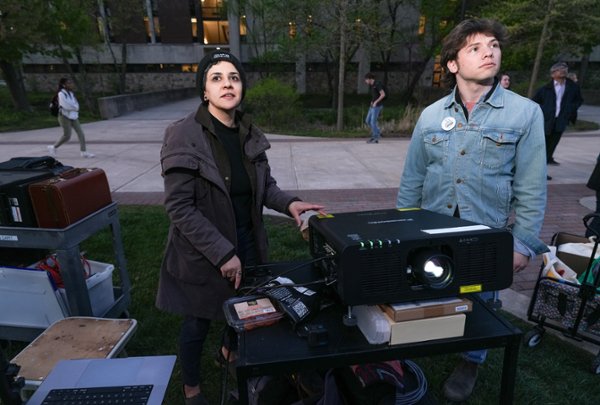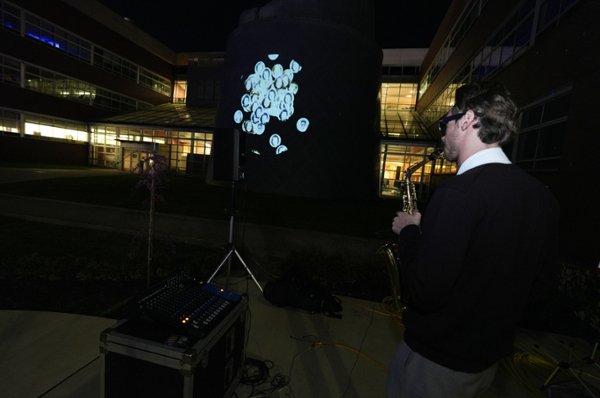Cosmic Light Maps program presents visions of the past and hopes for the future
Cosmic Light Maps program presents visions of the past and hopes for the future
As darkness fell and the song of a student’s saxophone rose, all eyes turned to faces of the past. Archival portraits cast upon the façade of the Ric and Jean Edelman Planetarium faded into constellations, brightening, dimming and reemerging. Lines sprouted, connecting the stars, the faces, and the crowd gathered to watch Cosmic Light Maps: A Time Portal Poesis.
“Everything in the universe is connected, from the smallest particles to our grandest gestures,” said Mina Zarfsaz, a transdisciplinary artist and assistant professor of design in the Ric Edelman College of Communication & Creative Arts (Edelman CCCA) who created the multimedia program. “Thinking about the interconnectedness of everything helps us think more intentionally about life.”
Held on the evening of April 22, the program was just one component of Zarfsaz’s collide i+i, a multisensory exhibition to commemorate Rowan University’s Centennial celebration. Others include Poesis Fossilis, in which Professor Emerita Antoinette Libro’s haiku and tanka poems have been etched on rocks spread across campus, and How to FOLLOW [like a river], a guided meditation that blends nature and augmented reality.
“It’s meditative, celestial, real-time art that people can explore in different ways,” marveled Dr. Sanford Tweedie, dean of the Edelman CCCA. “As it’s gotten darker, the exhibition feels more immersive.”
The inspiration for the project’s title was “the collision of ‘i’ in the institution and ‘i’ in the individual, two entities that are intertwined,” Zarfsaz said.
collide i+i was nearly two years in the making. From the beginning, Zarfsaz envisioned outdoor nighttime projections achieved with theatrical-quality illuminations and augmented reality technology. Through these projections, she said, “we're opening up a time portal to the past and future simultaneously.”
Bringing the interactive, experiential project to life required philosophical contextualization, research, projection mapping experiments and much more. To do so, Zarfsaz engaged students from her Design and Environments course with such varied majors as art, design, geography, engineering and psychology.
The students mined University Archives for source materials, learned from the built environment of the campus and contemplated how to use technology for storytelling.
“Our efforts were shaped not only by the work itself but also logistical influences,” said junior geography and art major Aedan Rosolia.
Rosolia contributed to the project in various ways, from ideation to augmented reality technology to support as a research assistant.
Zarfsaz likened the project and the process of developing it to a rearview mirror.
“We have 100 years of wisdom to take guidance from,” she said. “It’s a forward-thinking way of approaching the Centennial.”
Zarfsaz asked attendees to offer their visions for the future which included, among other things, love, hope, success, happiness, imagination and time.
“We must synthesize lessons of the past and take wisdom from them to create a pathway for a sustainable future,” she said.
